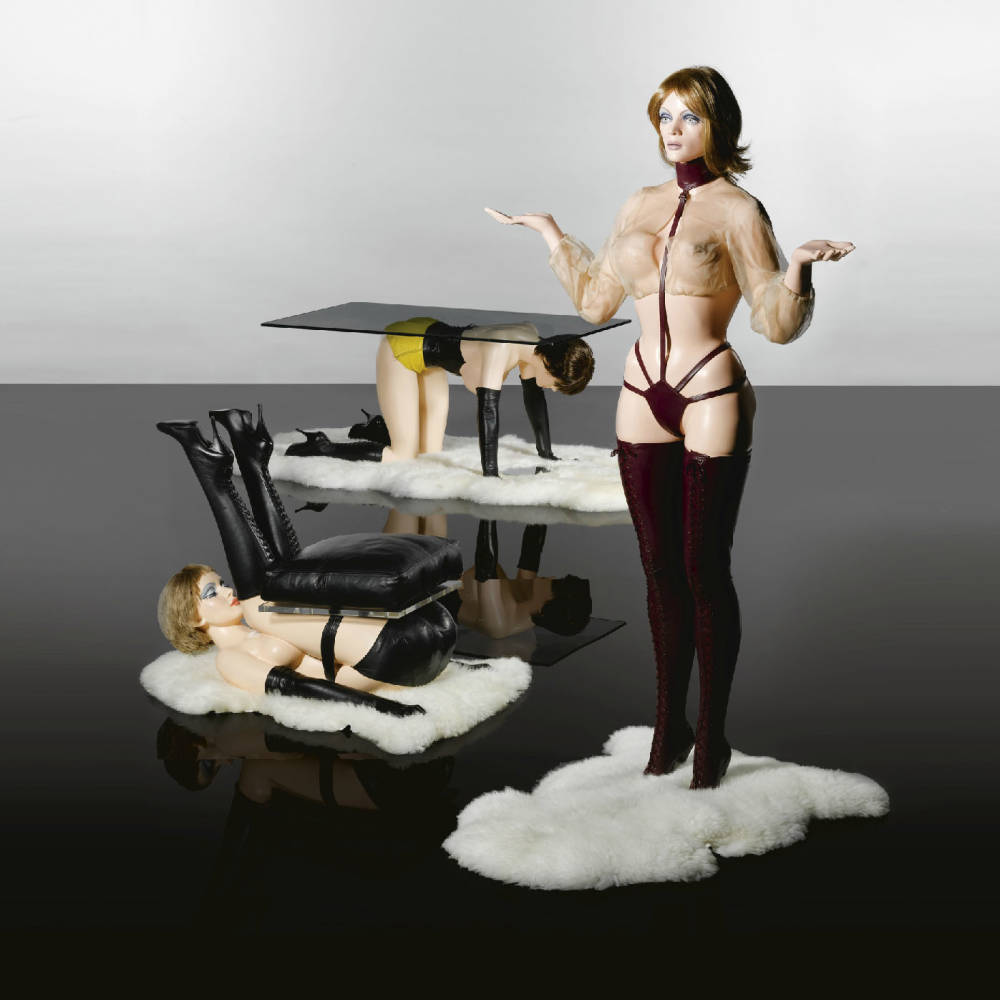
Allen Jones
Trio of Furniture, 1969
Creative minds are constantly seeking new mediums for self-expression. Whether it be artists and musicians designing clothing, fashion designers dabbling as DJs, or architects exploring the field of industrial design, it is hard to cap creativity. This trend has existed for decades, and the 20th century birthed some of the most notable of such examples, case in point, artist Allen Jones.
Credited for launching the British Pop art movement, Allen Jones was known for his figurative paintings that toyed with celebrating and satirizing fetishes. After moving to New York in the early 1960s, Jones began developing his signature erotic aesthetic often characterized by sexual imagery and his interest in traditional male and female power dynamics. Jones’ fascination with sexualizing the human body emerged early in his work, leading him on a creative venture that quickly expanded from a two-dimensional canvas into the mediums of sculpture and furniture design.
Allen Jones
Standing Figure, 1969
Allen Jones
Table, 1969
In 1970, Jones debuted his erotic furniture sculpture series titled ‘Hatstand, Table and Chair’. The three pieces, which objectify fiberglass female mannequins in BDSM ensembles, were bound for opposition and quickly became the most famous and controversial works of his career. At the time of their reveal, rising activity and awareness of the Women’s Liberation Movement was taking place around the world, while countless female artists such as Judy Chicago and film-maker Laura Mulvey were vocalizing their critique of the male gaze.
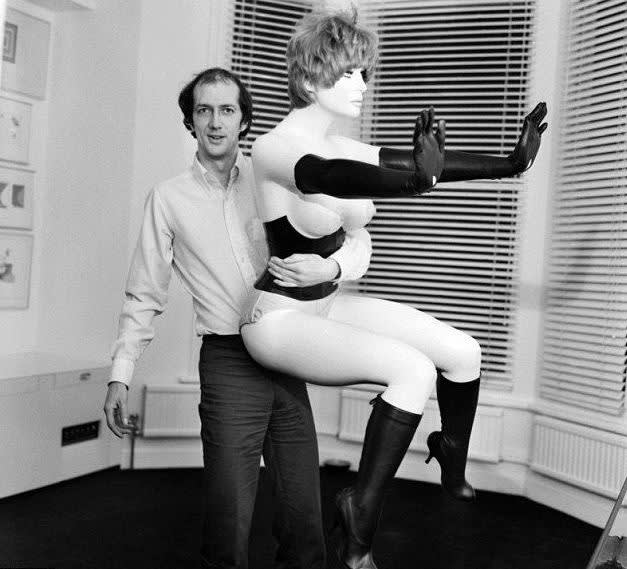
Allen Jones
Holding one of his figures
Jones’ trio of ‘furniture’ works consisted of scantily clad female mannequins standing, kneeling and lying down in suggestive positions atop shaggy, individual area rugs. His use of erotic materials, thigh-high boots, leather gloves, barely-there thongs, and exposed breasts was met with immediate controversy. While Jones’ style reflects a desire to explore the representation of “the figure” in the context of 1960s minimalism, his erotic notions toyed with the objectification of women and sent feminists ablaze.

Allen Jones
Hatstand, Table and Chair, 1970
Debuted to protests in the 1970s, Allen Jones’ forniphilic "fetish" mannequins rocketed the artist to international fame while simultaneously making him enemy number one of the women’s liberation movement. Although Jones defended his work as a statement about the female form in response to the overwhelming decline of figural representation in modern art, his exhibitions continued to inspire outrage as protestors let off stink bombs and a demonstrator poured paint stripper over ‘Chair’ at the Tate Modern on International Women’s Day in 1986.
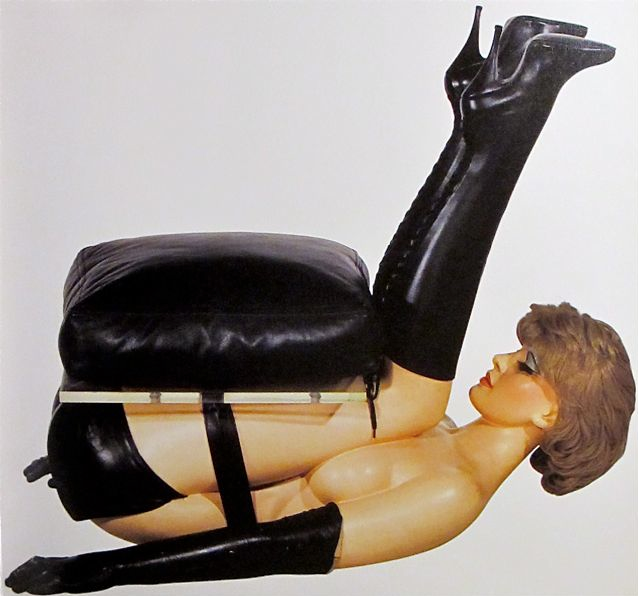
Allen Jones
Table, 1969
Though time tends to heal all wounds, and the art world has certainly been met with its fair share of controversy since, it is perhaps without surprise that Jones’ 1969 series of furniture has continued to stimulate debate while also serving as a source of inspiration. One contemporary figure that took a liking to the series, fashion designer Rick Owens, falls under the latter category of reactionary discourse.
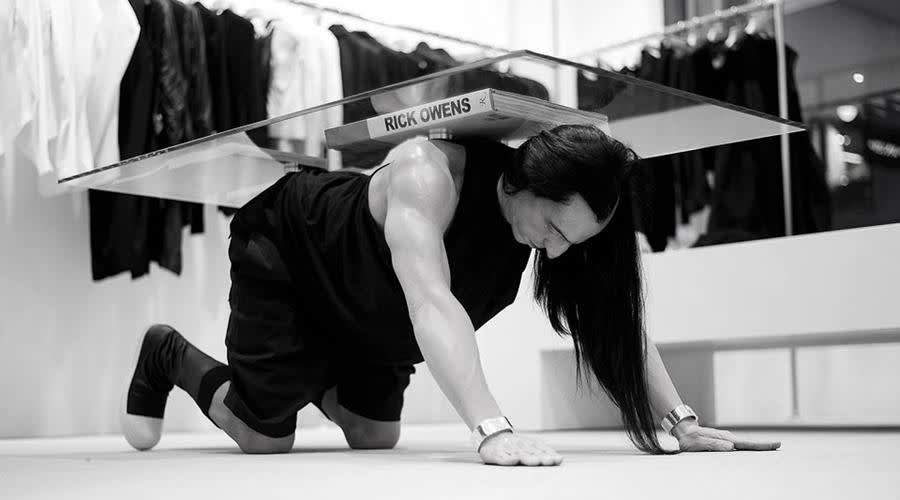
Rick Owens
Handstand, Table and Chair, Inspired by Allen Jones
In one of the most direct examples of ‘fashion imitating art’, Owens released a series of furniture objects that have traveled from his Milan store to the JOYCE Boutique in Hong Kong and his L.A. flagship, modeled after Jones’ trio of erotic sculptures. Rather than objectifying females, however, the avant-garde designer replaced the original works’ scantily clad mannequins with realistic wax renderings of his iconic muscular frame and jet-black hair, decked out, of course, in Rick Owens boots and apparel. Much like his collections do, Owens’ doppelgangers arranged in similarly precarious poses force viewers to reconsider how they see clothing, eroticism, and the human body, while positioning Owens as the subject of objectification.
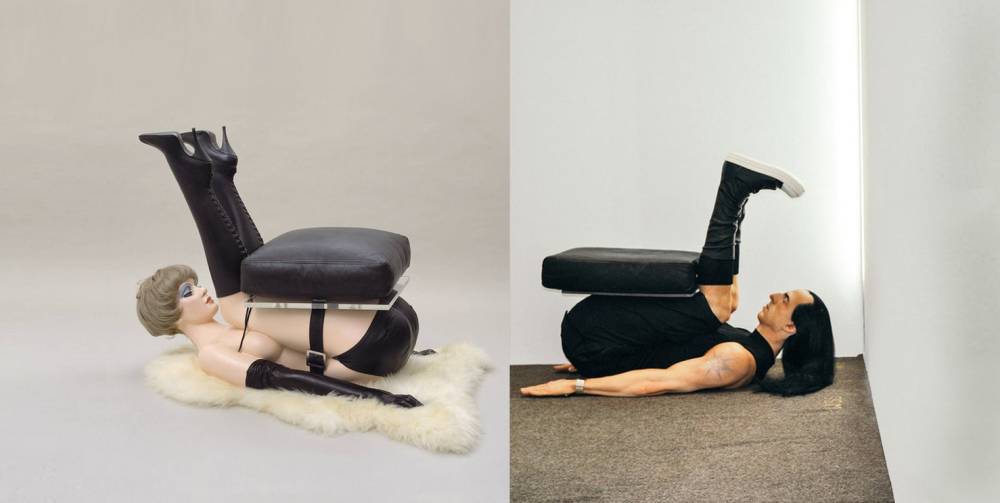
Allen Jones Chair, 1969 (left), Rick Owens Handstand, Table and Chair (right)
Whether seen as a parody, revival, or natural continuation of Jones’ original artistic dialogue on the constructs of the female form, there is no better individual than Rick Owens, the fashion world’s ultimate purveyor of avant-garde design, to carry on Allen Jones’ erotic aesthetic.


